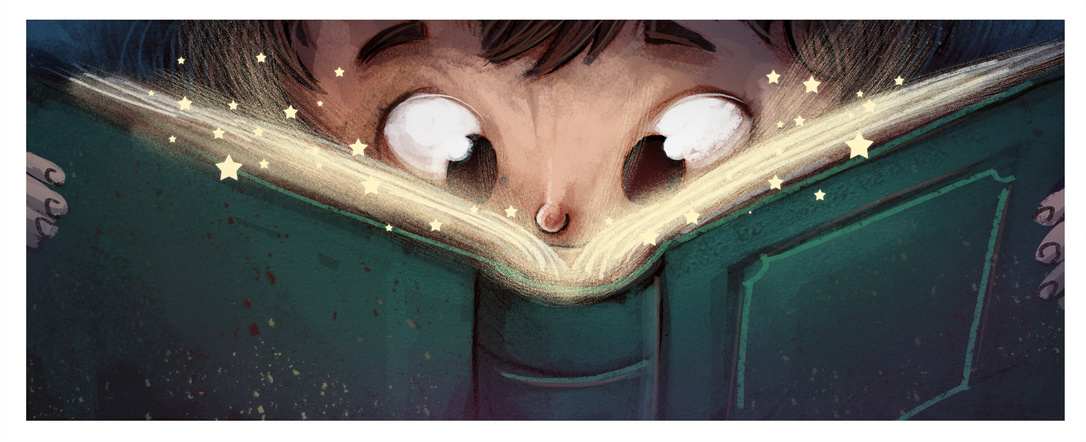Posted by
Mordy Oberstein
I don’t believe that there is some sort of ethereal conflict between SEO and content. The two, for the most part, work together harmoniously to help you develop an engaging and visible product. However, let’s be honest, no marriage is perfect, there are always rocky moments of tension. The same holds true in regards to the balance between SEO and content considerations. What’s needed to develop catchy content is not always in-sync with the more technical considerations of SEO.
As a content creator, I often find myself straddling the fence and seeking resolution to this epic cosmic content conundrum. As such, I’m happy to share my pain in finding the right balance between SEO and content with you (SEO content strategy tips will be served). To do so, I’ll explore a few common situations of content development tension that I personally find myself struggling with as I create content.

Beyond Creating Natural Content with Sound SEO – Don’t Get Caught in a Trap
Everyone will tell you to write naturally. That is, we all know that your content has to have a natural flow, it has to be quality, and it can’t just be stuffed with keywords. I don’t think I need to tell you this. What I will say though is that it’s not enough to write solid content that has a natural tone which also considers your SEO/keywords needs at the same time. Doing that just avoids doing something wrong, it doesn’t mean you’ve done anything right. Yes, you should write naturally, yes you should optimize your content for SEO purposes, but that’s not a positive, it’s a lack of a negative.
It’s not enough to write content that is SEO optimized but sounds naturally robust. This is not a harmonious way to balance SEO and content, as much as everyone will tell you that it is. In truth, your SEO optimized content needs to be well researched and well thought out. Optimizing such content for SEO is what brings balance to the force. In other words, don’t fall into the trap of worrying so much about avoiding content creation that is overly “SEO” to the extent that you’re not overly worried about creating originally profound content, which is what you should be doing. You’re content should reflect serious thought that is based either on specific research, personal experience (such as this piece), etc.

Getting caught in the trap of ensuring your content isn’t overly optimized isn’t going to help you. I would rather phrase the issue as, ensure not that you’re content sounds natural, but that each sentence is substantial. If you’re inserting sentences into your content for the explicit purpose of either sounding natural or to bolster your SEO… stop. If you’re writing a sentence that isn’t substantial in that it’s character is defined by serving a content based purpose (i.e. to inform, entertain, etc.), scratch it, no matter how natural it sounds or no matter how good for your SEO it may be. Meaning, don’t get so worried about this problem that you’re content becomes about solving it, not about creating solid content for your readers.
Optimizing Your Headers for SEO or for Captivating Catchiness?
This is a question I have a hard time with myself at times. I’m a writer first and foremost. I like to write, always have, and I like to write with a creative flair. Writing catchy headers is not only satisfying, but it can grab a reader’s attention. A good H2 doesn’t tell you what the upcoming section is about. No, no, no… a good H2 makes your reader want to read the upcoming section, something your readers may ****, but search engines may not comprehend. Herein lies the problem. On the one hand, you don’t want to just inform readers, you want to captivate them. On the other hand, if search engines don’t prominently display your content, well then fewer people will be offered the chance to be captivated. Stuck between a rock and hard place for certain.
Bringing Balance to the Force that are H2 Headers – Optimizing for Content and SEO Success
I don’t have an answer that will make anyone happy, which is why I like it. For all those who argue that SEO concerns reign supreme, my answer will not satisfy you. For us artsy folk who would prefer to express that pizzazz, you won’t be satisfied either. My answer works for two “people” and two people only… readers and search engines. The answer… simple… mix it up. Sounds simple enough… let some H2 headers showcase your creative panache while others get right to the point and boost your SEO.
Easy to say, harder to do. So how do you go about this unsatisfying task? I have a few guidelines, pointers, and whatnot:
1) Walk off in style: Have you ever been involved in some sort of petty argument? Well for those of you who haven’t, the single most important thing in such a scenario is a pithy line with which to end the conversation. The same with your content. You’ve said your peace, made your case, yet you need to close shop with one last paragraph. Such a proposition demands we give the reader a good reason to keep reading despite the fact that they already have the essential information they came for. At the same time, this final paragraph will be the last thing your reader sees, it will make a sort of concluding impression. The need here is then literary, and your header should be as such. Ending off with a standardized keyword based header will most likely not achieve what you set out to do. Best advice… make that last header count with something luminous.

2) Don’t shroud your most impactful content: If the whole idea of boring and straightforward headers are to allow search engines to pick your content up, then the last thing you want to do is shroud your key concepts in some sort of idiom or otherwise figurative language. For those sections that discuss the real meat and potatoes of your content, use those SEO optimized headers. No point in using an “SEO header” for a section that is ancillary.
3) Don’t get hung up with rules: Think of your content as art imitating life. Real life is messy and fluid, and all the rules in the world are subject to on the spot revision. I don’t need to tell you that each piece of content has its own feel and flow. What we as writers sometimes need help with is a simple reminder that it’s OK if the rules and formats we tend to follow don’t work for a specific piece of content. So my last tip here is to remember to play it by ear, see how the content goes and what makes sense along the way, despite what that little red suited SEO devil on your shoulder tells you.
A Slick & Savvy Solution without Settling for SEO Content Marketing Success?
Just as to run through all of the possibilities, you could also try to create headers that are both crafty and technical, as I did in the H3 here. However, I caution restraint in doing so for a few reasons. One, it’s not always that easy. Not every chunk of content lends itself to a heading that optimizes for SEO and allows you to show off your inner charisma, so don’t force it. Going in such a direction also runs the risk that neither goal will be accomplished. These headings are inherently on the long side, and because of that the message may be muddied and/or watered down. Meaning, the header won’t have any swagger, nor will it have any SEO juice, then what do you have? Nothing.
Content Organization Matters for SEO (and Storytelling)

As a storyteller I like to save the best for last. There’s nothing like a natural buildup of a series of information to create an increasingly dramatic narrative, no matter how “dry” the content is. However, search engines have their own narrative format that we all should consider. Namely, from an SEO point of view, the most important content should come first. Unlike storytelling, where you hook the reader, and draw them in deeper and deeper until you unleash that the most powerful textual element, SEO inclined content starts out fast and furious. That’s because search engines like Google work under the assumption that if something comes earlier on in a piece of content, it is more primary. As such, if you want to rank for a keyword related to that most important piece of content, better to have it up top.
I’m not going to lie to you, this not only is a downer from a creative standpoint, but it creates a tough writing situation. If you put your best piece first then what follows is a letdown of sorts, which is not good from a readership perspective (nor for your bounce rate either). Now, as I’ve said already, this is not a hard and fast rule, there will be times where you are forced to tell a story. Obviously, if this big piece of content can’t be understood without some background you can’t jump right into the thick of things. But also, if the content really will suffer, if the reader is left with completely anticlimactic material after your big reveal, then don’t show your hand too early.
I would argue, that in such a scenario even if a piece ranks lower because you pushed that important content down, it’s worth it, especially in the long run. The absolute last thing you want as a writer is for your readers to think your content is not worth reading, so a bit of a lower rank (possibly) is well worth it. Again, I’ll argue against anyone on this… if throwing your climatic piece of information towards the top of your content turns it into rubbish, don’t do it. End of story….
….The story continues with some ways you can have your cake and it eat too. Say you do reveal your ace upfront, what can you then do keep readers engaged?
1) Now is a good time for a creative header: Remember what we said above about when using a catchy header is the way to go? Well now is definitely that time. Think about it like this, if your next header re-engages your audience, you’re set. Now all you have to do is build up the suspense and story-line from there, the fact that the level of content significance has dropped is all but forgotten.
2) Image is everything: If you had to play your hand and put down your most important piece of information upfront, you can take the piece in a different literary direction. Instead of aiming to inform, you can aim to entertain while informing. One great way to do this is to build content that is heavily dependent on visual media (images, pictures, graphs, etc.). This can be particularly effective if what you just wrote about was heavy and technical. By offering subsequent material that is not only informative, but light and entertaining in a way, you give your reader a psychological reason to keep scrolling down the page, despite having already been shown that Vader turns on the Emperor and throws him down a shaft, saving his son from certain death…. i.e. the end of and most important part of the story.
3) Connect the dots: If you start off your content with what is your Picasso, or magnum opus, and are fearful that what follows is not as substantial and as such as engaging, fret not. You can use this to your advantage. You’ve captivated your audience, this a good thing, so capitalize on it. Lead your reader into that next topic by creating a connection between it, and that really exciting piece of information you just related. If you can create a connection between the two subject matters, then you’re audience should naturally be curious to follow the trail down the rabbit hole.

This Little Light of Mine…
I’m of the opinion that all major philosophical discourse can be reduced to song titles. In the debate over content that is either sharp-edged SEO or ornately filled with pictorial imagery, my philosophy is… this little light of mine, I’m going to let it shine… let it shine… let it shine… let it shine. Actually, if you think about it, it’s the perfect construct. The song, This Little Light of Mine presupposes there is that which is constricting the light, an imperative of sorts demanding the light not be shown. In our case, this is the demands put upon us creative types to cater to SEO needs. However, the best way to to pull this content creating balancing act off is to let it (i.e. that more creative part of you) shine.

The result of feeling the need to consider SEO while striving to shine will be content that considers the technical nature of SEO while creating solid content that satisfies your readers (which is also part of a good SEO strategy). Really, there is a certain harmony that exists between creativity and SEO. In fact, it’s much like the American system of government, a system of checks and balances where one inclination does not rule above the other branches of content creation. So feel free to let it shine… within reason.
==> Find out how to write a blog post that your audience loves

